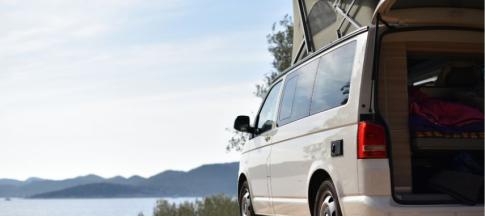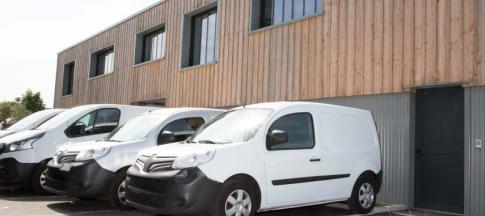
Keeping your van or campervan well insulated not only helps it stay warm during cold nights, but it’ll also stop it getting too hot on summer days.
It also has other benefits, like reducing condensation (if installed correctly) and acting as a sound barrier.
Insulating your van windows
One of the best types of insulation to use for windows is reflective foil mats.
They’re usually thin rolls of foil filled with bubbles (like bubble wrap) or microfibre, and are lightweight and energy efficient.
Ideally, get reversible ones with one reflective side and one dull side. The reflective side will reflect light and heat, the dull side will absorb it.
If your van is a common make or model, you can likely pick up ready-made mats for your windows from campervan stores.
It’s also possible to make your own. You can buy thermal insulation in rolls, measure your windows to make templates, and cut it to size. Then attach it to your windows with suckers.
Alternatively, you could attach it with foil tape around the edges. Though this looks a bit more rough, it’s good for ensuring no cracks of light get in if you like to sleep in total darkness.
Simply covering the windows overnight can make a big difference, both in terms of shutting out light and keeping in heat.
Insulating your van’s panels and ceiling
If you’ve got a cargo van, or you’re converting one into a campervan, then you can DIY certain elements.
To prevent condensation, you need a sealed moisture barrier. This should help prevent mould and rust.
To retain heat, you need a non-absorbent insulator. Ideally, this should be good quality, and thin.
It’s best to use more heavy-duty insulation for the panels that are sandwiched in the gap between the metal and the plywood if your van is boarded out.
If it’s not, it’s a good idea to do so at some point, as plywood will bolster your panels and protect your metalwork.
It’s best to make sure that the insulation board and the outside metal panel don’t touch. Ideally there should be a gap of about ¾” (2cm) between the panel and the board.
This should stop any condensation from gathering. The cavity will offer better thermal resistance, and the insulation doesn’t need to be as thick.
You can glue the board to the van’s body with spray foam or spray adhesive, then fill the gaps with spray foam. There’s bound to be a bit of compression when you squish the plywood back on, so try to allow for this.
As heat rises, it’s also wise to insulate the ceiling. Ideally, you’d do this with the same materials you’d use for the panels, but you may want to reconsider if you’re losing too much height.
Insulating your van roof and floor
If you’ve bought a van second-hand, it’s likely that it’s previously been used for lugging tools and equipment.
Because of this, there may be scrapes and scratches on the floor. Before installing any insulation, give it a good sweep, and a layer of paint to seal it.
You probably don’t want to lose too much height, so insulating the floor with a space mat or a layer of carpet should be enough if you don’t want to go all out.
Other van insulation tips:
While you want to wrap up the van nicely and warm, you should also keep it well-ventilated to prevent condensation. Look into installing a vent fan.
Although insulation helps with condensation, it’s smart to avoid producing too much vapour inside the van if you can help it.
If you have a campervan, it’s a good idea to avoid cooking or boiling water in it. Consider having a removable unit so you can cook and wash up outside, and an awning in case it’s windy or raining.


